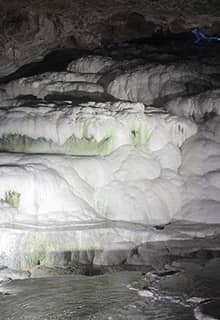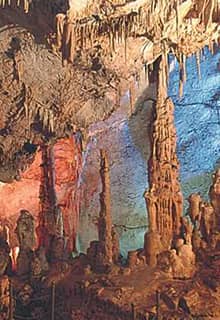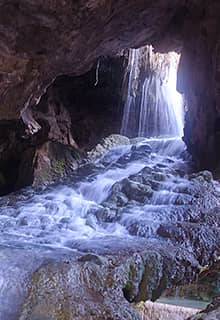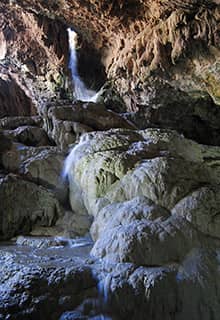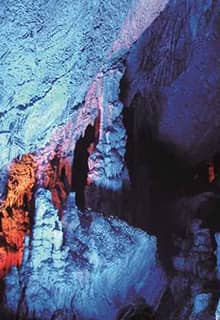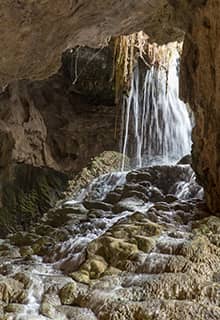

caves Aegean
Türkiye
Kaklık Cave: Underground Pamukkale, Denizli
Kaklık Cave is located about 45 kilometers from the Pamukkale travertines.
Referred to as the “Underground Pamukkale,” Kaklik Cave is a lesser-known destination that boasts the same travertine structures as its more famous neighbor - except that they’re smaller and are found inside a cave. The cave was discovered after the collapse of its roof and has only been open to the public since 2002.
Kaklık Cave is full of travertine pools, stalagmites, stalactites, and a large quantity of sulfur which gives the cave its distinctive odor. The cave was formed over 2.5 million years ago during the Pliocene period. It features several rimstone pools and waterfalls which are thought to be beneficial for the treatment of skin diseases and arthritis. Several of the walls receive enough sunlight to grow moss and climbing plants.
Roughly 190 meters long, the deepest point of the cave is about 14 meters from the entrance.
The smell that greets you at the entrance is because the water that flows through the cave contains sulfur and a high amount of sodium bicarbonate. It’s for this reason the locals have named the cave “Kokarhamam Pinarı,” which translates as “Smelly Bathhouse Spring.”
Like the spa city of Hierapolis near the Pamukkale travertines, the cave’s mineral-rich water is prized for its health benefits.
Yerküpe Cave, Muğla
Located in the district of Kavaklıdere in Muğla Province, Yerküpe Cave is a semi-active and young cave.
In the past, Yerküpe Cave was used by nomadic shepherds to cool their animals under the plane trees and to store their goods. The cave is a “natural refrigerator.” In summer months, when the air temperature in the region is 38 degrees Celsius, the temperature in the cave is 5 degrees Celsius.
The cave, which has a total length of 100 meters, consists of a single gallery. There is a 17-meter elevation difference between the upper entrance and the lower exit of the cave, which extends in accordance with the slope of the valley floor. Small ups and downs within the cave are caused by blocks falling from the ceiling and dripstone deposits. There are piles of gravel and sand at the base of Yerküpe Cave, which has a width of 3-10 meters and a ceiling height of 2-8 meters.
When you visit the cave, which is a protected natural site, you will be greeted by the wonderful view of the waterfall at the entrance.
Other Caves in the Aegean Region
- Keloğlan Cave, Denizli

